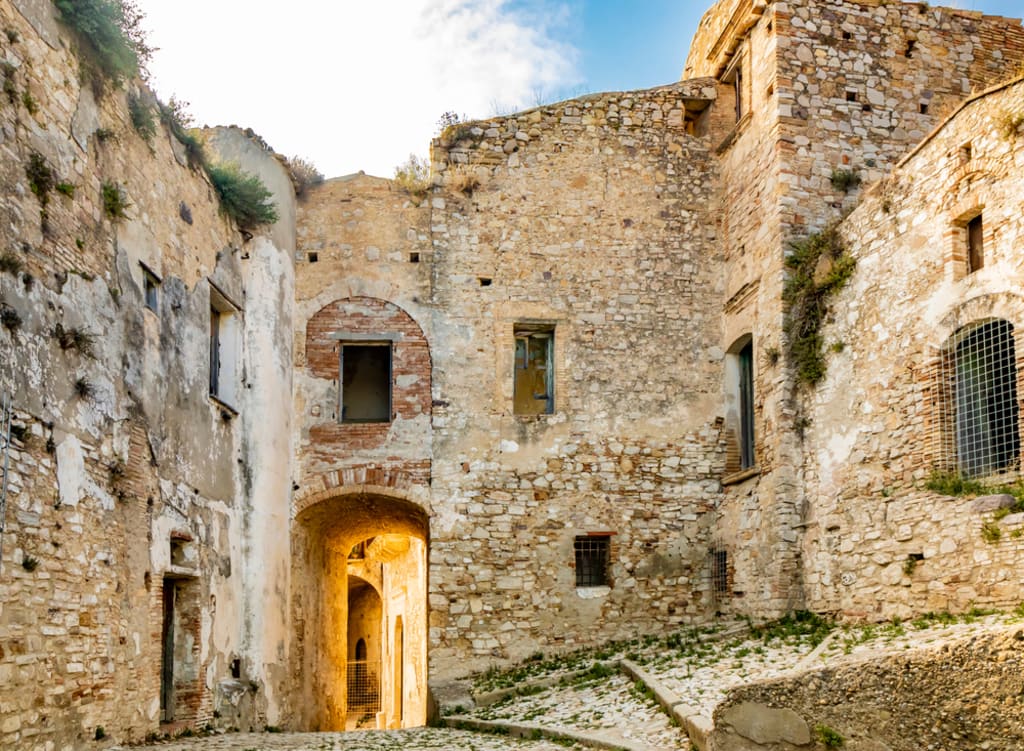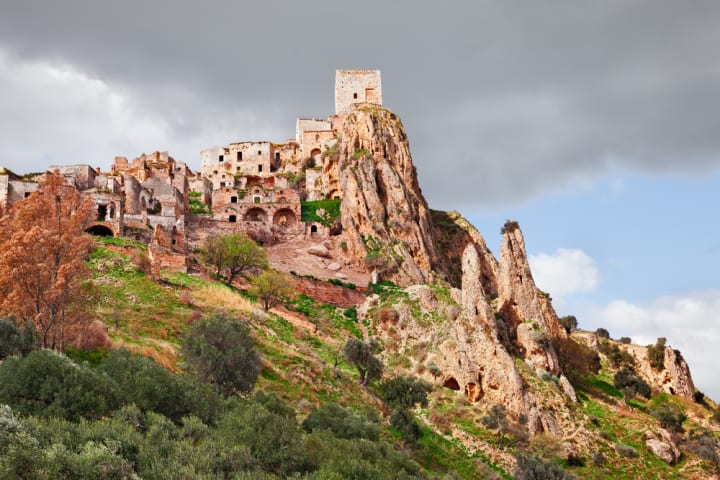
The town of Craco was abandoned in 1980, but you can still visit its decaying streets and buildingsHis new home could not have felt more distant from the prosperous, metropolitan north. He found himself in towns with no healthcare, electricity or running water; bandits roamed the countryside, and belief in magic and spells overshadowed Christianity. In one village, locals declared that ‘Christ stopped at Eboli’ – that religion and progress had effectively bypassed this part of the country. Levi’s book evoked a place adrift from Italy, Europe and, indeed, the twentieth century.
Much has changed in Basilicata since Levi returned to the north. But the ghost town of Craco, set in the badlands only a couple of miles from where he lived, is a relic of that ancient and mysterious Italy that he once knew – where stony ruins bake in the midday heat, and where the past looms far larger than the present and future.
Nestled in the heart of the Italian countryside lies a unique and haunting sight - the abandoned village of Craco. This once thriving community is now a ghost town, a testament to the passage of time and the forces of nature that have slowly reclaimed the land. Craco is a fascinating example of how the march of progress can sometimes leave entire communities behind, and the stories that this eerie place has to tell are both poignant and evocative.
Located in the Basilicata region of southern Italy, Craco dates back to the 8th century. Over the centuries, it grew into a bustling community with a population of several thousand people. The village was built on a steep hill, which made it both difficult to access and a strategic location. As a result, it was the site of several battles over the centuries, including an invasion by the Saracens in the 10th century.

Despite these challenges, Craco continued to thrive throughout the centuries, becoming a prosperous agricultural center and a hub for trade and commerce. But as the 20th century dawned, the village's fortunes began to wane. First, a series of landslides and earthquakes made the terrain increasingly unstable, causing many of the villagers to leave. Then, in the 1960s, a massive flood destroyed much of the town's infrastructure, including roads, bridges, and buildings.
In the wake of these disasters, the Italian government declared Craco uninhabitable and ordered its residents to evacuate. By 1975, the town was completely abandoned, left to the mercy of the elements and the slow passage of time. Today, the ruins of the once-great village still stand, a haunting testament to the lives and stories of those who once called it home.
Visiting Craco today is a unique and unforgettable experience. As you make your way through the narrow, winding streets, you can almost feel the weight of history and the passage of time pressing down on you. The buildings, though crumbling and decayed, are still breathtakingly beautiful, with intricate stonework, ornate balconies, and fading frescoes. Some of the structures are so fragile that visitors are not allowed to enter them, for fear of causing further damage.

Despite its abandonment, Craco continues to capture the imaginations of visitors from around the world. Its eerie beauty has made it a popular location for film and television productions, including Mel Gibson's "The Passion of the Christ" and the James Bond film "Quantum of Solace." The village has also become a popular destination for photographers and artists, drawn to its unique and haunting atmosphere.
But despite its current status as a ghost town, there is hope that Craco's story is not yet over. In recent years, there have been efforts to preserve and restore the town's historic buildings, with the goal of turning it into a cultural and educational center. While the village may never again be the bustling center of commerce and trade that it once was, its unique beauty and historical significance make it a valuable treasure for Italy and the world.

In conclusion, the abandoned village of Craco is a haunting and evocative reminder of the passage of time and the power of nature. Its crumbling buildings, winding streets, and faded frescoes tell the stories of generations of people who called it home, and its eerie beauty continues to capture the imaginations of visitors from around the world. While the town may never again be the bustling center of commerce and trade that it once was, its historical significance and unique beauty make it a treasure that should be preserved and celebrated for generations to come.





Comments
There are no comments for this story
Be the first to respond and start the conversation.